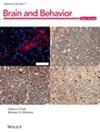Association of Brain-derived Neurotrophic Factor Polymorphisms With Alcohol Use Disorder: An Updated Meta-Analysis of Genetic Association Studies
Abstract
Background
Brain-derived neurotrophic factor (BDNF) has been proposed to play a role in chronic alcohol consumption. However, studies investigating the association of single nucleotide polymorphisms (SNPs) in the BDNF gene with alcohol use disorder (AUD), including alcohol dependence, have obtained inconsistent results. This meta-analysis aims to examine the role of BDNF SNPs (rs6265, rs16917204, rs7103411, and rs11030104) in the risk of AUD.
Materials and Methods
A multidatabase search identified 17 articles (20 studies) for inclusion. Pooled odds ratios (ORs) and 95% confidence intervals (CIs) were calculated to estimate associations using standard genetic models (homozygous, recessive, dominant, and codominant). Significant associations were defined as those with a p-value ≤ 0.05 after applying the Bonferroni correction (pBC). Subgroup analysis was conducted based on ethnicity (Caucasian and Asian populations). Sources of heterogeneity were investigated through outlier treatment and meta-regression analysis. Only significant outcomes were further subjected to sensitivity analysis and assessment of publication bias.
Results
This meta-analysis generated four significant pooled ORs, representing the core outcomes, all of which indicated reduced risks. Overall, the results indicated a significant association between the BDNF polymorphism and the risk of AUD in homozygous (OR = 0.72, 95% CIs = 0.60–0.85, pBC = 0.0038) and codominant (OR = 0.84, 95% CIs = 0.78–0.91, pBC = 0.0019) model. In subgroup analysis by ethnicity, homozygous (OR = 0.59, 95% CIs = 0.44–0.78, pBC = 0.0057) and recessive (OR = 0.61, 95% CIs = 0.46–0.81, pBC = 0.0133) models of BDNF polymorphisms were significantly associated with a reduced risk of AUD in Caucasians. However, no significant associations were found in Asians. Meta-regression analysis did not identify any covariates that significantly contributed to the observed heterogeneity. The core significant associations were robust and showed no evidence of publication bias.
Conclusion
The current meta-analysis suggests that the examined BDNF SNPs have a protective effect in the overall analysis (homozygous and codominant) and in the Caucasians subgroup (homozygous and recessive) while the Asians exhibited no effects of BDNF SNPs on AUD. BDNF polymorphisms might serve as a protective factor against the risk of AUD and could be useful markers in the clinical genetics of AUD.


 求助内容:
求助内容: 应助结果提醒方式:
应助结果提醒方式:


